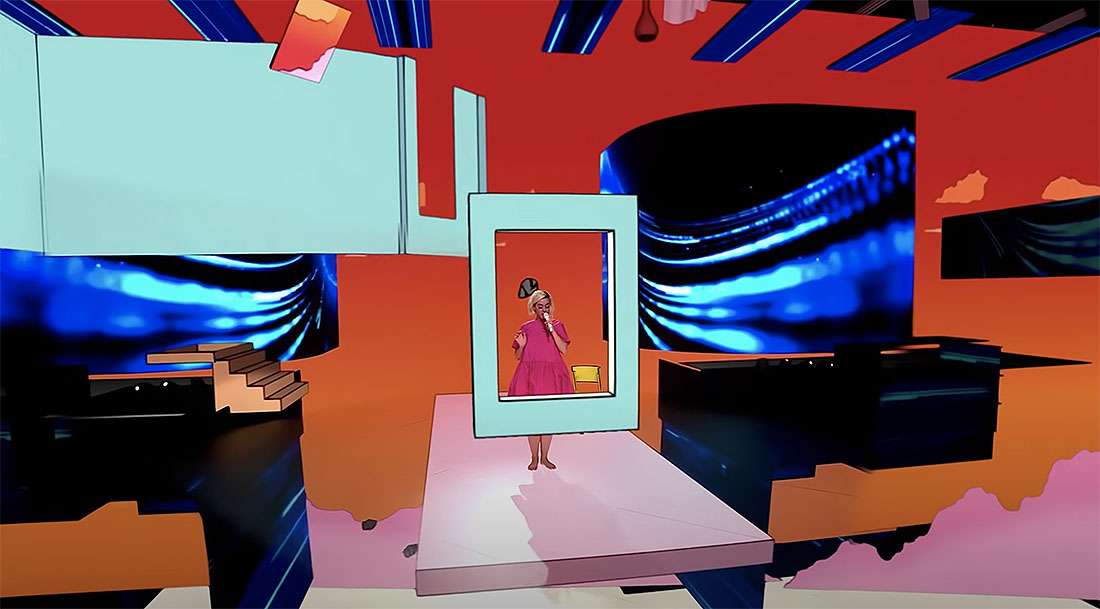Q&A: Disguise sees immersive presentations at forefront of home engagement

Subscribe to NCS for the latest news, project case studies and product announcements in broadcast technology, creative design and engineering delivered to your inbox.
Disguise’s Tom Rockhill recently shared with NewscastStudio his thoughts on the state of the broadcast industry and how augmented and immersive reality will help drive its future.
What was the state of the broadcast industry before the coronavirus crisis commenced?
Prior to the outbreak, there was, and still is, a seemingly limitless capability to what can be achieved in broadcast thanks to advances in technology.
Through the outbreak, this obviously has seen a standstill to a big part of the live events industry, but that has not stopped our resilient industry in seeking out new and innovative solutions that go above and beyond what was previously thought possible, and capable with broadcasting, using elements of AR, MR and xR (Extended Reality).
Creating new levels of engagement is a top priority for a huge number of providers and broadcasting live events, and there are prime examples of this prior to the epidemic including the Opening Ceremony of the Pakistan Super League, which broke a world record for the longest AR broadcast in history, and was viewed by more than 50 million people around the globe, reflecting the popularity of this next step of fan and viewer engagement picking up pace within broadcast.
How have you seen the coronavirus pandemic affect the broadcast industry?
Broadcasted live events are arguably among the worst-hit industries, and travel restrictions and strict social distancing measures have meant the cancellation of global sporting events, festivals and televised award ceremonies.
This really has thrown a wrench in the hundreds of hours of planned programming for the foreseeable and has left broadcasters in a very difficult position.
With there being a big question mark around the duration of travel restrictions and lockdown measures being in place, this, of course, has also had an effect on the advertising revenue of broadcasters, leaving them with no choice but to seek ways of generating engaging programming and navigating smaller budgets, whilst continuing to cover this ever-developing story.
How has Disguise been navigating the effects of coronavirus? Have you done anything to help broadcasters during this time?
We recognize that it is an extremely hard time for our industry at the moment. We listened to demands and launched a series of initiatives that are supporting our community of freelancers, partners and customers across the globe. This saw the release of our latest software update, r17.2, which enhances remote working, and includes additional tools for creatives in the broadcast world to devise new concepts to connect with audiences at home, or online with Augmented Reality and 360 video.
In addition, we launched the Disguise OnDemand hub, offering free and unlimited access to virtual training workshops in multiple languages on a daily basis. We are also offering a free six-month license to our popular ‘designer’ software, used to visualize, design, and sequence projects, from concept through to showtime.
Disguise technology has been at the forefront of some groundbreaking projects in broadcasting previously, has there been a demand for more projects like this during the pandemic, or are broadcasters playing it safe?
We are definitely seeing a peak in interest for technologies capable of creating at home engagement, and reaching remote audiences with elements of AR and xR.
With millions of people confined largely to their homes and consumption of various types of content at an all-time high, this is truly a perfect time for broadcasters to try their hand with experiential technology.
Innovations like Disguise’s xR (Extended Reality) workflow shift the production process by allowing the creation of fully immersive experiences and advanced technical opportunities due to developing green screen technology. xR’s virtual set extension places presenters or performers in expansive environments significantly bigger than the available studio environment – opening up endless opportunities, especially in a time when staffing, as well as space, is restricted.
A great example of this during lockdown is the first-of-its-kind performance by popstar Katy Perry on the American Idol virtual season finale. xR technology immersed the singer in a completely virtual world that reacted around her as she performed her new single in a simple LED studio set in Los Angeles.
Change paves the path for innovation, and by utilizing experiential technology like xR, more compelling broadcasts are delivered. These new technologies will prove invaluable to many industries through these times and in the future.
Any advice for broadcasters for the foreseeable future?
With millions of people being at home, and who may have to return to this lockdown lifestyle depending on how the situation evolves and should there be a second peak of the pandemic, broadcasters have to be more open to alternative ways of engaging audiences, to take home viewing experiences to the next level.
There are varying assumptions and opinions about how the world will look and behave after this crisis, and whether we can ever go back to ‘the way things were’.
But perhaps we should consider evolving into a better way of working – a more flexible, more technologically advanced, more immersive and engaging way of operating, that also future proofs broadcasting despite what arises. It is also significantly likely that creating immersive content, with experiential technology will play a much bigger part in the new ‘normal’ of broadcasting.
Subscribe to NCS for the latest news, project case studies and product announcements in broadcast technology, creative design and engineering delivered to your inbox.





tags
Augmented Reality, Augmented Reality for Broadcast, Augmented Reality Sets, Coronavirus, Disguise, Extended Reality, Immersive Augmented Reality, immersive mixed reality, sports augmented reality, XR Stages
categories
Augmented Reality, Virtual Production and Virtual Sets, Executive Q&A, Featured, Thought Leadership, Voices